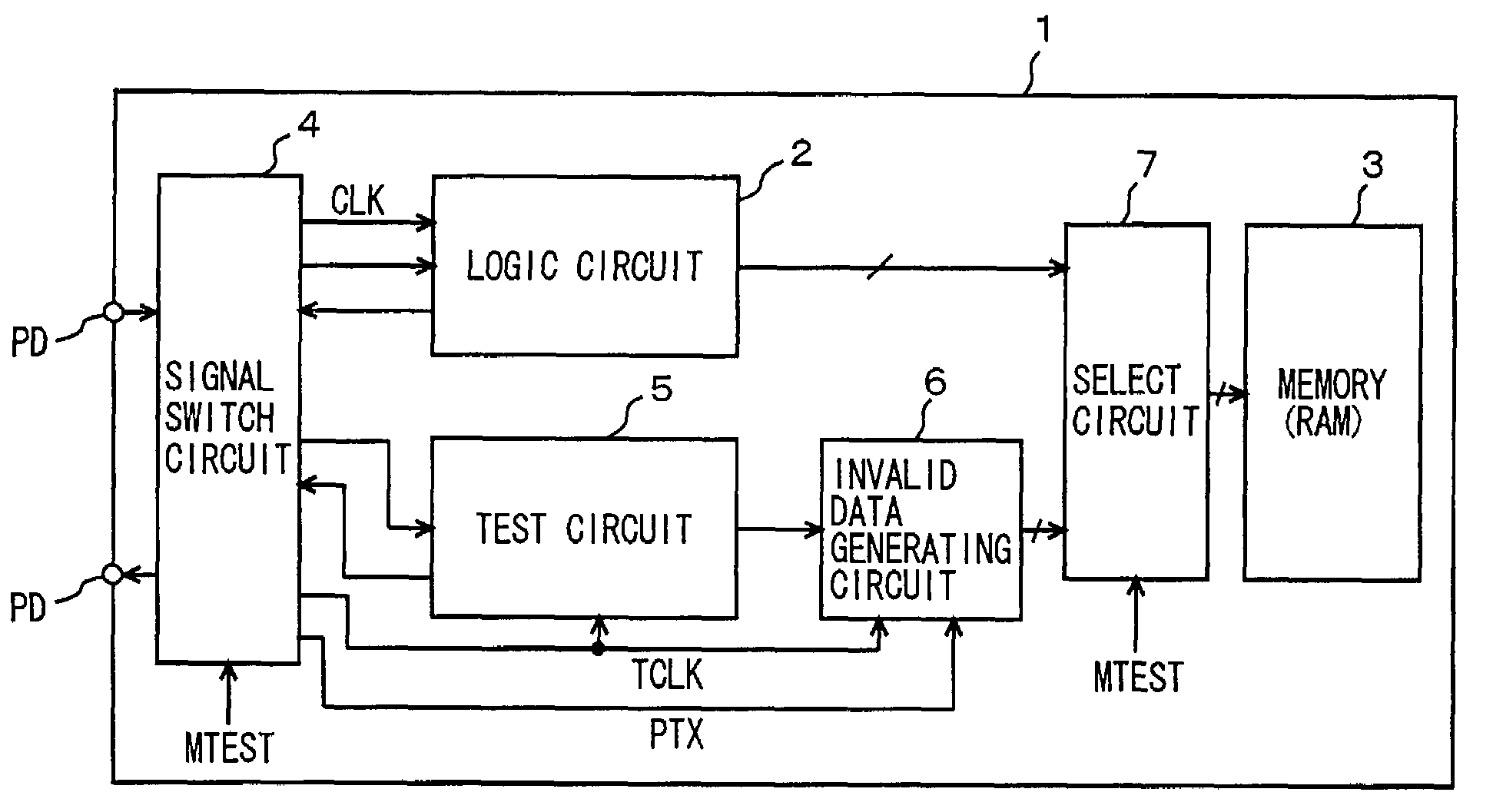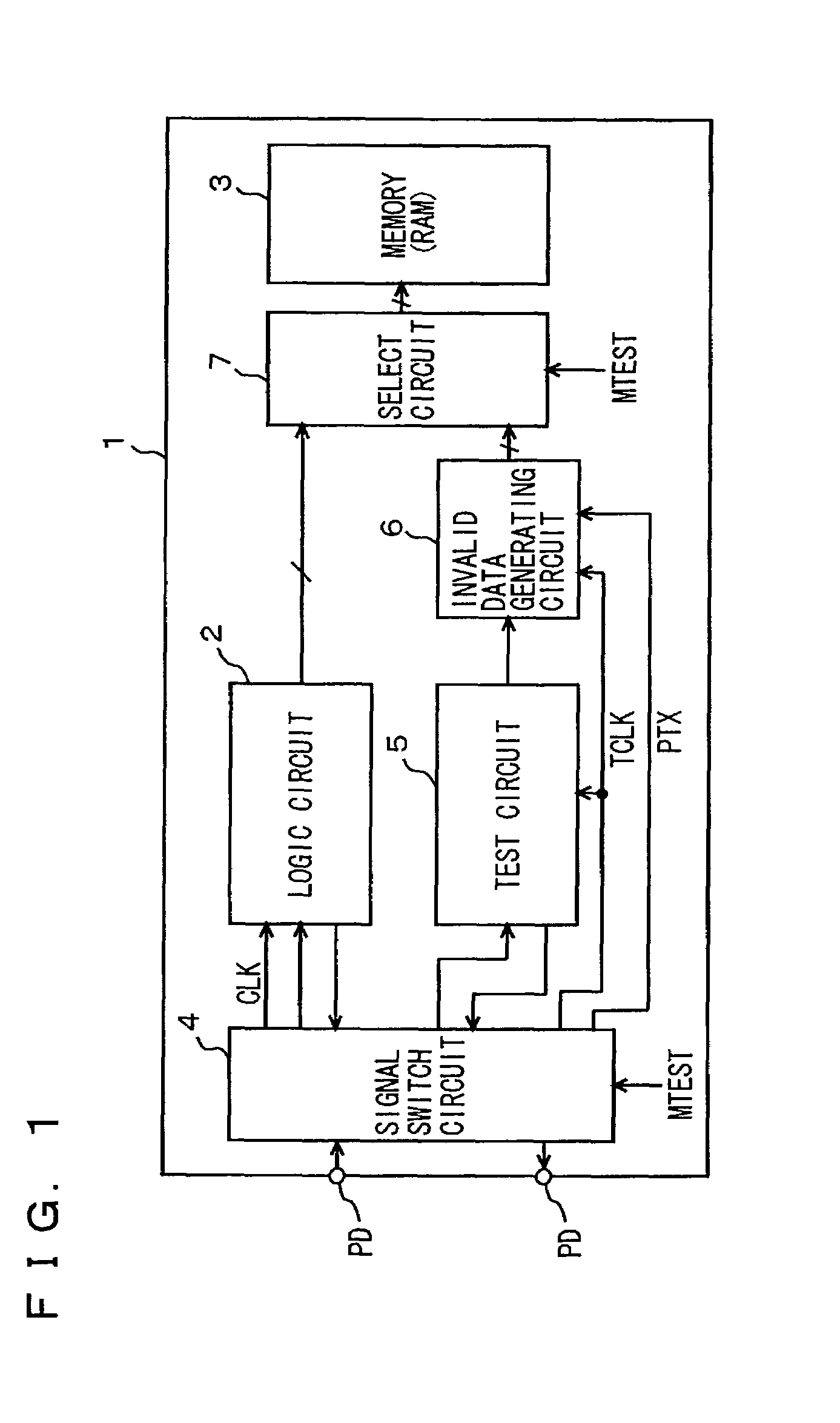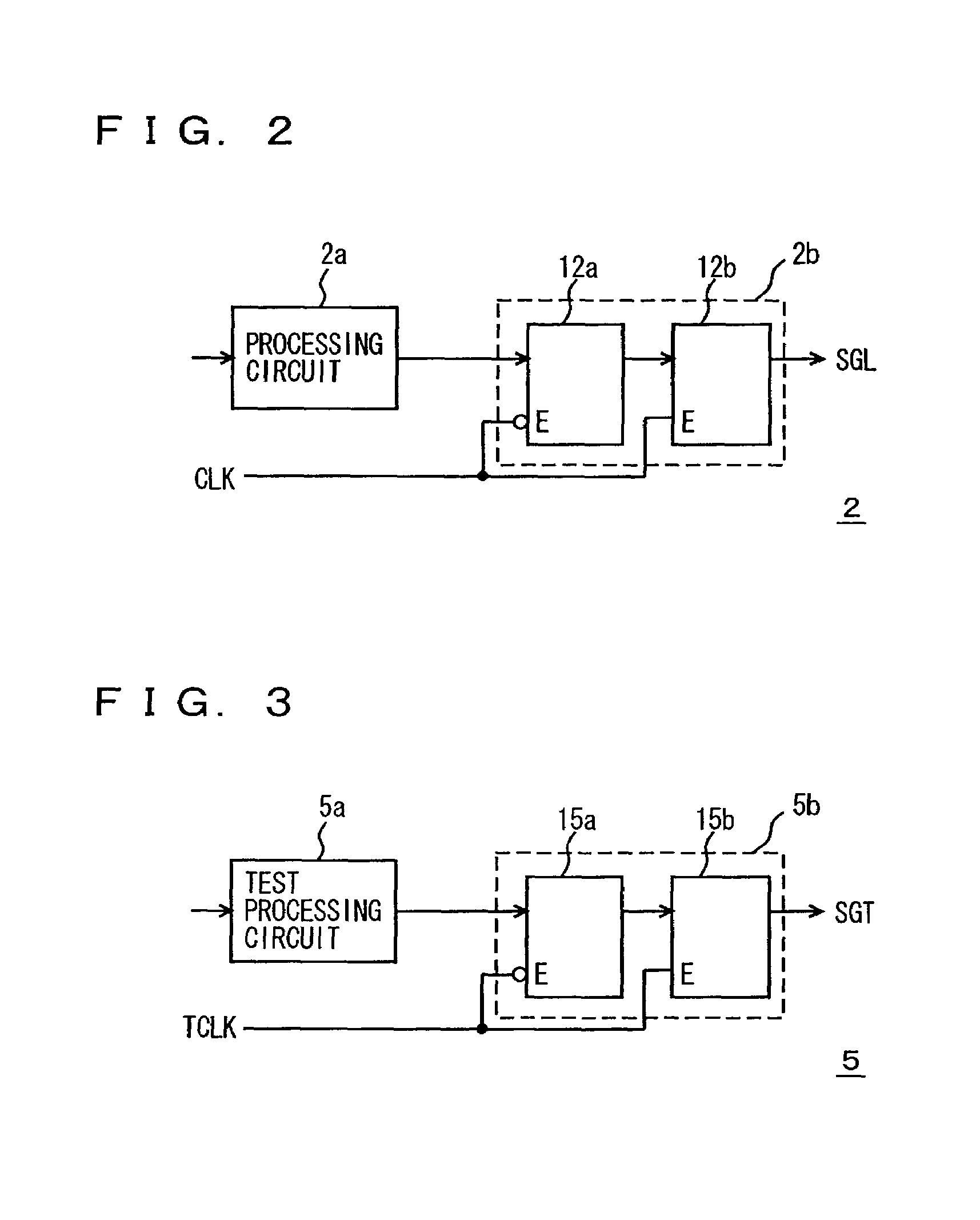Test circuit capable of testing embedded memory with reliability
a test circuit and memory technology, applied in the direction of instruments, coding, code conversion, etc., can solve the problems of the like of memory b>904/b>, the inability to correctly measure the set up and hold time, and the inability to correctly measure the access time of data reading when logic b>902/b> accesses memory b>904/b>
- Summary
- Abstract
- Description
- Claims
- Application Information
AI Technical Summary
Benefits of technology
Problems solved by technology
Method used
Image
Examples
first embodiment
[0063]FIG. 1 is a diagram schematically showing an overall configuration of a semiconductor integrated circuit device according to a first embodiment of the present invention. In FIG. 1, a semiconductor integrated circuit device 1 includes: a logic circuit 2 performing a prescribed processing; a memory (RAM) 3 storing data required by logic circuit 2; a test circuit 5 communicating a test signal and data with a test apparatus outside semiconductor integrated circuit device 1 in a test mode; an invalid data generating circuit 6 selectively setting a test signal from test circuit 5 to an invalid state according to an asynchronous control signal PTX; a signal switch circuit 4 selectively coupling logic circuit 2 and test circuit 5 to external pads according to a test mode instructing signal MTEST; and a select circuit 7 selectively coupling output signals of logic circuit 2 and invalid data generating circuit 6 to memory 3 according to test mode instructing signal MTEST.
[0064]Data read...
second embodiment
[0112]FIG. 10 is a diagram schematically showing a configuration of a main portion of a semiconductor integrated circuit according to a second embodiment of the present invention. In FIG. 10, there is provided a phase comparison circuit 20 for detecting an actual phase difference between memory clock signal MCLK and asynchronous control signal PTX. Phase comparison circuit 20 is constituted of a scan register constituting a scan path described later. In FIG. 10, phase comparison circuit 20 includes: a select circuit 21 selecting one of an internally applied serial signal / data SIi, memory clock signal MCLK and asynchronous control signal PTX according to a select signal SFTDR 1:0>; and a flip-flop 22 taking in a signal selected by select circuit 21 according to a gating signal CLKDR. Flip-flop 22 constitutes a scan path to transfer a taken-in signal to a register circuit at the next stage. Gating signal CLKDR is a signal asynchronous to memory clock signal MCLK, asynchronous control ...
third embodiment
[0123]FIG. 12 is a diagram schematically showing a main portion of a semiconductor integrated circuit according to a third embodiment of the present invention. In FIG. 12, in order to store data into register circuit 6b storing invalid data included in invalid data generating circuit 6, a scan register circuit 30 is provided. Scan register circuit 30 includes register circuits connected in series, and a serial input signal SI is sequentially transferred according to transfer clock signal CLKDR.
[0124]Invalid data generating circuit 6 generates test signals TEOUTG corresponding to respective input nodes of memory 3. Therefore, the input nodes of memory 3 is large in number and the number of registers (register 6b shown in FIG. 4) storing invalid data VD included in invalid data generating circuit 6 also increases. Invalid data is serially transferred to many registers 6b through scan register circuit 30 to store data. With such a configuration, it is merely required to sequentially tr...
PUM
 Login to View More
Login to View More Abstract
Description
Claims
Application Information
 Login to View More
Login to View More - R&D
- Intellectual Property
- Life Sciences
- Materials
- Tech Scout
- Unparalleled Data Quality
- Higher Quality Content
- 60% Fewer Hallucinations
Browse by: Latest US Patents, China's latest patents, Technical Efficacy Thesaurus, Application Domain, Technology Topic, Popular Technical Reports.
© 2025 PatSnap. All rights reserved.Legal|Privacy policy|Modern Slavery Act Transparency Statement|Sitemap|About US| Contact US: help@patsnap.com



